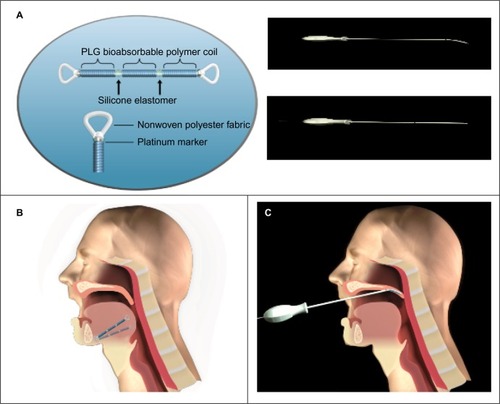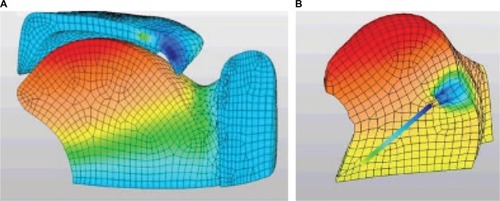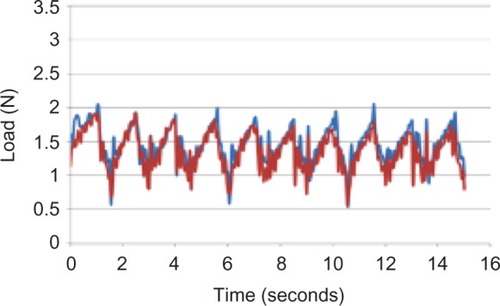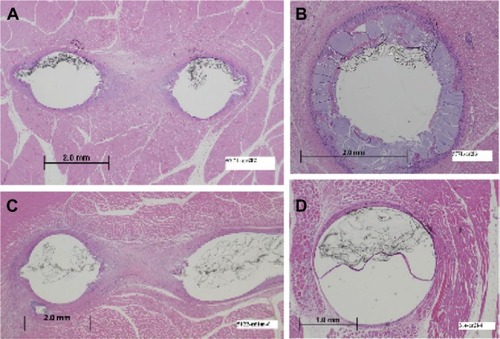Figures & data
Figure 1 Schematic of the implant and delivery system.
Abbreviation: PLG, polylactide-co-glycolide.

Figure 2 FEA model of the palate and tongue (A) and single-tongue implant (B).

Figure 3 685207-F1 pre- and postfatigue testing static conditioning test

Figure 4 Exemplar histological samples: inflammatory response at the attachment points and middle of the linear component of the implants of sheep at 30 days and 60 days.
Abbreviation: PLG, polylactide-co-glycolide.

Table 1 Single-hole silicone loop and paddle-shaped implant ends resulted in the best fibrous tissue attachment in lumbar muscle tissue in the ovine model
Table 2 For both tongue and soft palate implants in the canine model, there was little inflammatory response for either silicone durometer tested
